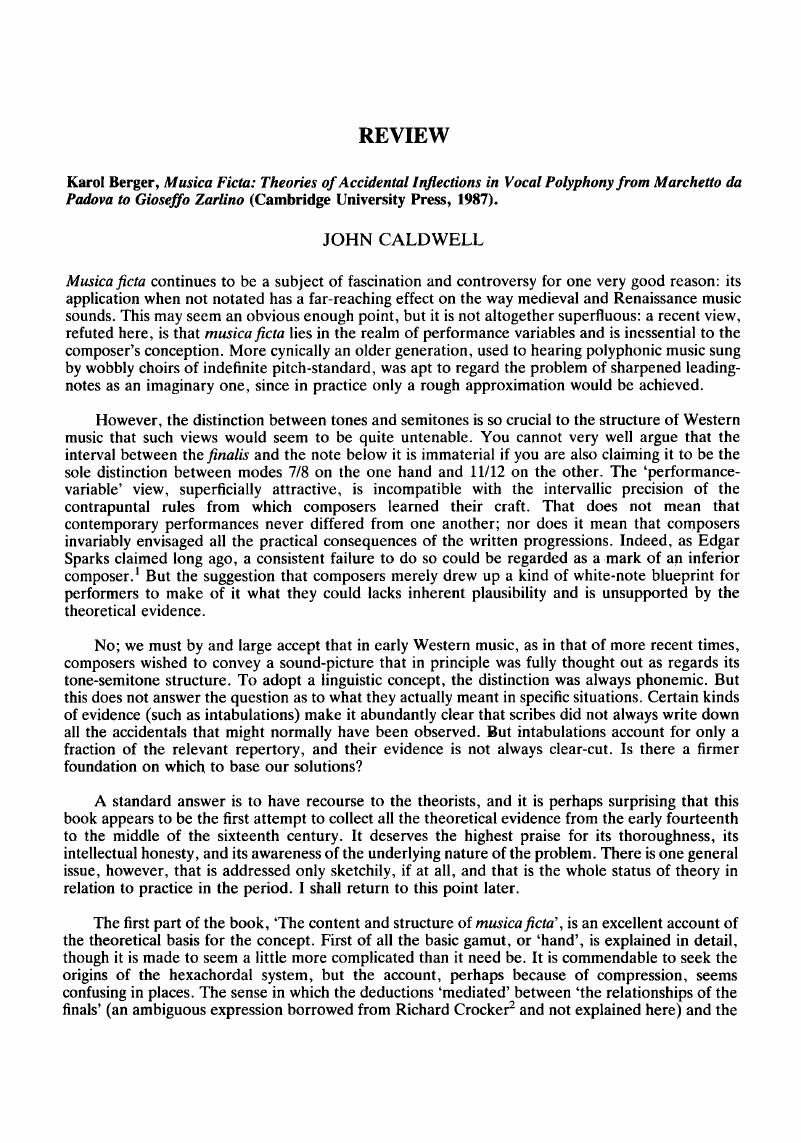No CrossRef data available.
Published online by Cambridge University Press: 01 January 2020

1 The Music of Noel Bauldeweyn (New York, 1972), 44–7.Google Scholar
2 In his important article ‘Hermann's Major Sixth”, Journal of the American Musicological Society, 25 (1972), 19–37.Google Scholar
3 Transl. Clement A. Miller (Musicological Studies and Documents, 20; A.I.M., 1968, 128).Google Scholar
4 The passage, with some typographical adjustment, reads as follows: ‘Septima regula est quod quando ex concordantia imperfecta perfectam petimus concordantiam, tanquam cantilenae terminationem vel alicuius partis eius harmonicae, ad propinquiorem perfectam diversis utriusque partibus motibus acquirendam concurrere necessum est. Ut exempli gratia quum tenor et cantus sextam maiorem sonuerint, videlicet diapenten cum tono, tunc ambo contrariis motibus procedentes, scilicet tenor unica voce descendens et cantus unica pariter voce in acutum intentus in octavam, quae considerata motuum contrarietate ipsi sextae propinquior est, illico conveniunt. Quod proprium est sextae maioris ad octavam scilicet transmeare. Minor vero sexta ad quintam frequentius revertitur unico motu, altera scilicet cantilenae parte immobili, altera mobili; contrariis vero motibus ad octavam item pertransit. Rursus quum cantus et tenor tertiam sonuerint, in unisonum (ducta prima motuum contiguorum contrarietate) convenient; atque item laxati in contrarium ambo ad quintam transferuntur.” Gaffurius, Practica musica (Milan, 1496), sig. ddijv–ddiij.Google Scholar
5 1st. Arm., p. 189: Book 3, transl. G.A. Marco and C.V. Palisca (New Haven, 1968), 82–3.Google Scholar
6 'We have concluded that the rule only applied at cadences’ (Berger, 130). Pietro Aaron appears to have made the link between cadences and music ficta that would justify Berger's approach (Libri tres de institutione harmonica, 1516, f.50v, cited Berger, 235, note 112); but the interpretation is not entirely clear, and in any case Aaron's modernizing approach would not justify extrapolation back to the fifteenth century.Google Scholar
7 The pitch-notation used in this review (as in Berger's book) is the ‘(pseudo-)Oddonian'.Google Scholar
8 Paradoxically enough, Berger's Ex.38, from Richafort's motet ‘Miseremini mei', would not have been weakened by the application of the theorists’ rules in full.Google Scholar
9 As Berger maintains on p. 176. There must surely be a purely mechanical element in copying that would include any notated accidentals in the scribe's exemplar; he would not normally distinguish between the ‘conventional’ and the ‘unconventional’ ones. Consequently the inclusion or omission in different sources of either kind of accidental must be regarded as essentially on the same footing.Google Scholar
10 The Tenor and Contratenor key-signatures in Oxford, Canonici 213 and Paris, n.a. fr. 6771 are regarded as ‘unconventional’ and hence mode-defining, although this is contrary to common sense and to the suggestion on p. 69 that in a fifteenth-century chanson the cantus could have this role.Google Scholar